







 |
||||||
 |
 |
 |
 |
 |
 |
 |
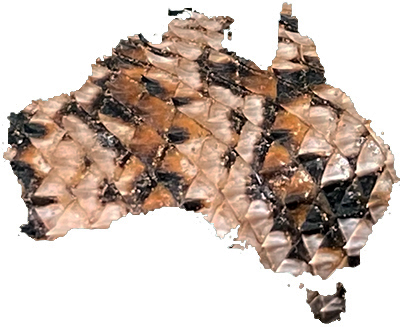
| About: The
pygmy spiny-tailed skink (Egernia
depressa) is a rotund little
skink. Their fairly short tail is
broad and flat and covered with
spines. They use their spiky tail to
help wedge themselves into tight
cracks of tree limbs and under bark
of the trunks, making it very
difficult for predators to extract
them. Four closely related species
were described as a part of the E.
depressa complex and include
the species cygnitos, eos
and epsisolus, which were
formerly considered a single
species. The other species of the E.
depressa complex are primarily
saxicolous, inhabiting the rocky
outcrops of WA. Range: Egernia depressa has a vast range across much of Western Australia ranging from around the latitude of Kalgoorlie in the south to Newman in the north. They can be found as far east as Laverton and occur along the west coast of WA. Habitat: This small skink is generally found in the tight cracks and hollows of dead trees in the mallee of the Pilbara, Gascoyne, Murchison and Goldfields areas of WA. They are generally found in trees, but may also utilize rock outcrops. Natural History Notes: These skinks are primarily insectivores and the bulk of the diet (around 80% of the volume of the diet) is made up of termites. Termites also make up 96% of the number of food items found in the stomach contents of E. depressa, suggesting they spend most of their time eating this prey item. Therefore, they are considered a termite specialist, and their small head and pointed snout is typical of an animal that is designed to feed on a large number of small insects. They will also feed on larvae, centipedes, ants and other insects and occasionally take plant matter (4% of the diet). These lizards are wary and quick to retreat to a secure site within a tight crack or hollow of a dead tree. They appear to be quite stable in the wild and on a trip to WA in 2014, we found and photographed 4 E. depressa. Most of these were tightly wedged into cracks in the trees, and we were careful not to disturb their retreat sites. General Notes: These lizards do well on a diet of dubia roach nymphs, crickets, or other appropriately sized insects. They will also do well on commercial diets like Repashy's Bluey Buffet. They are a somewhat shy species and often run for cover when they catch sight of someone coming near their enclosure. They are often observed while feeding, however, and may grow accustomed to keepers and become if they are observed and no attempts are made to hold the lizard. We are working with a pair of depressa that were obtained from Allen Repashy in 2021. They are a great species to work with! |
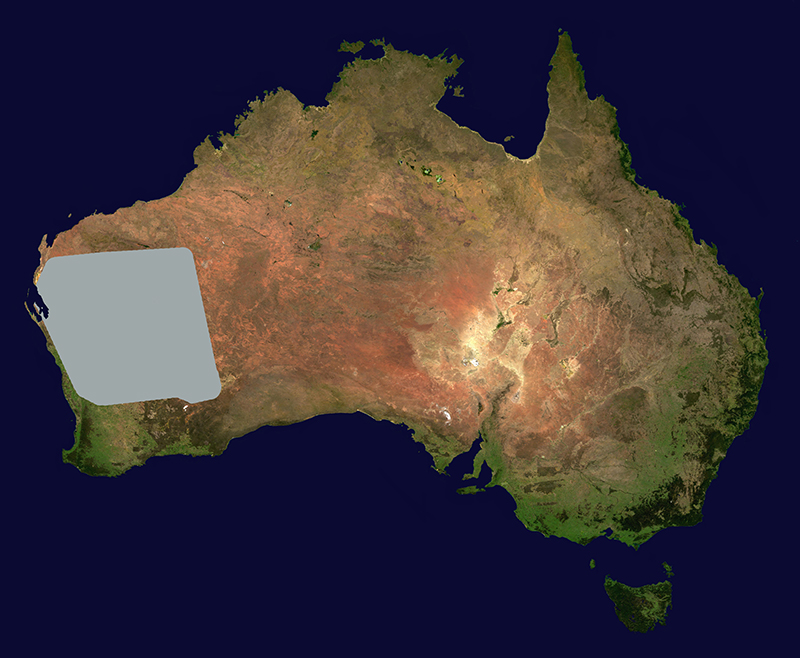 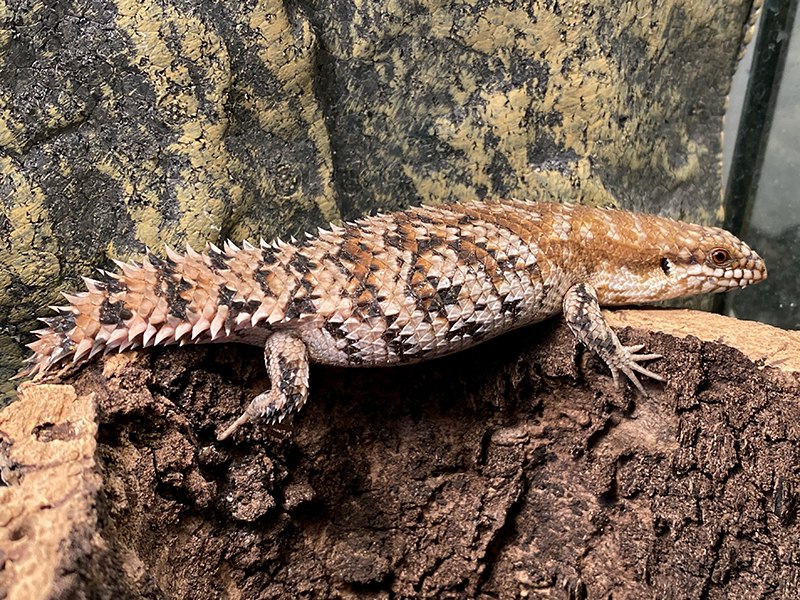
A beautiful pygmy
spiny-tailed skink (Egernia depressa)
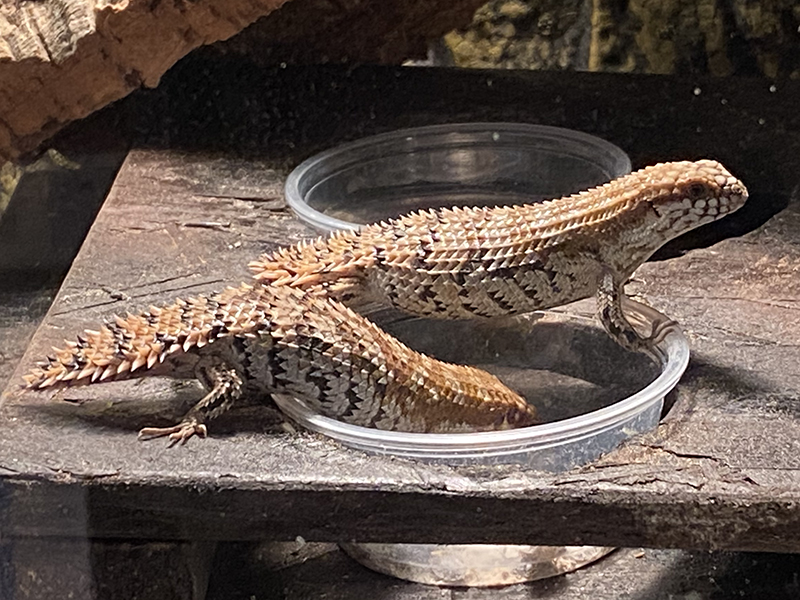
Pygmy spiny-tailed skinks (Egernia
depressa) feeding on dubia nymphs
|
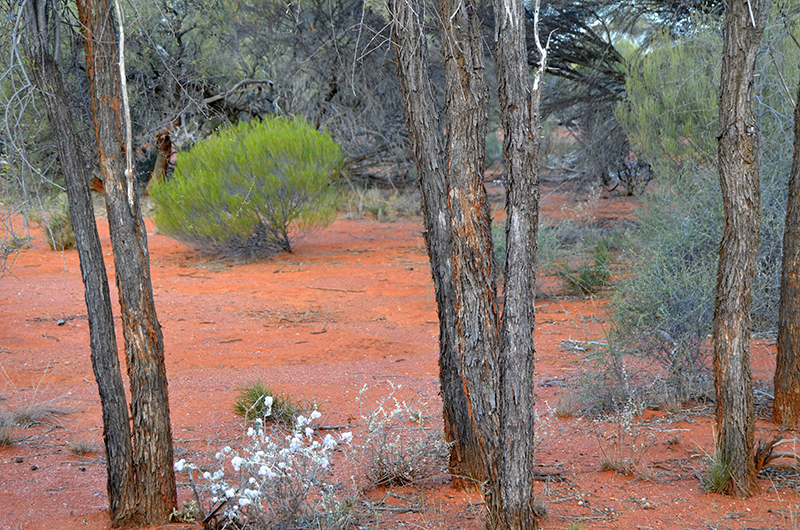 Habitat
of the pygmy spiny-tailed skink (Egernia
depressa)
|
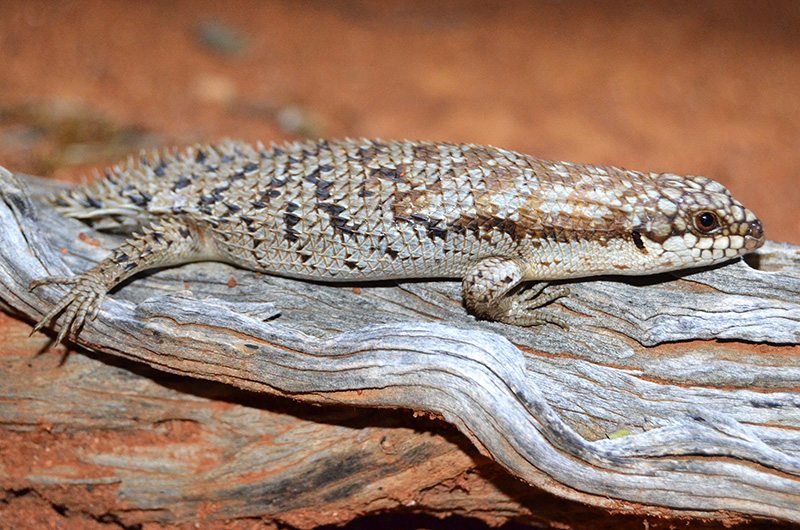 A
wild pygmy spiny-tailed skink (Egernia
depressa) found near Payne's Find,
Western Australia in 2014
|